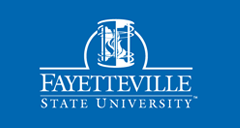Abstract
This study examines the mediating influence of creativity inhibitors on collectivist dynamics and faculty creativity in higher education organizations. Complexity theory was employed to frame how collectivist dynamic (Complexity Interaction) and creativity inhibitor foster faculty creativity in higher education. The Partial Least Square of Structural Equation Model (PLS-SEM) was used to analyze data using the PLS algorithm, and mediating effect to assess the predictive accuracy on creativity among 73 tenure and tenure-track faculty members in a south east research-based university in the United States. The result showed that creativity inhibitors have positive influence on the interaction between complexity interaction (collectivist) and faculty creativity. Additionally, indicator-types like organizational impediments, psychological safety, organizational encouragement, freedom, organizational pressure, fun and novelty/ originality had the greatest impact on faculty creativity in higher education. These findings are consistent with the argument that appropriate amount of pressure encourages workers to seek creative solutions to challenges in an effort to control that pressure
Recommended Citation
Olalere, Anthony Abidemi
(2016)
"The Influence of Creativity Inhibitors and Collectivist Dynamics,"
Journal of Research Initiatives: Vol. 2:
Iss.
2, Article 8.
Available at:
https://digitalcommons.uncfsu.edu/jri/vol2/iss2/8
Included in
Adult and Continuing Education Administration Commons, Community College Leadership Commons, Educational Assessment, Evaluation, and Research Commons, Educational Leadership Commons, Educational Methods Commons, Higher Education Commons, Higher Education Administration Commons, Higher Education and Teaching Commons, International and Comparative Education Commons
